Biodiversity

Share
Related Links
Biodiversity Offset Users Guide
Mozambique Biodiversity Offsets Roadmap (PDF October 2016)
A National Biodiversity Offset Scheme: A Road Map for Liberia's Mining Sector
Balancing biodiversity wealth and mining interests in Liberia
Economic Growth and Drivers of Deforestation in the Congo Basin
Trouble in the forest seen through the eyes of orphan bonobos
Balancing Mining Development and Forest Conservation in the Congo Basin
Attachments
OFFSETS-PUBLIC INFORMATION NOTE_1.pdf
Authors/Partners
World Bank Africa Region
Biodiversity Offsets Toolkit and Sourcebook
CHALLENGE
In many African countries, native forests are under pressure from rapidly-spreading roads, dams and other infrastructure, as well as the allocation of large forest areas to mining, commercial agriculture, and other non-forest uses. Biodiversity offsets are one of the tools available to address such pressures. Offsets can be used to strengthen protected areas of similar or greater conservation value than the area lost to specific projects. The driving impetus for such offset schemes is usually biodiversity protection, although the associated conservation areas provide additional ecosystem services such as soil and water conservation, flood mitigation, and habitat for sustainably exploitable fisheries. In an era of often flat -- and sometimes declining -- governmental support for forest conservation in general and protected areas in particular, biodiversity offsets provide an underutilized opportunity to mobilize substantial new funding from public infrastructure accounts as well as the private sector.
Biodiversity offsets are not a panacea, nor are they always the best tool available for achieving forest conservation. As part of the “mitigation hierarchy” underpinning the World Bank’s Safeguard Policies and the IFC’s Performance Standards, offsets are considered a last resort, after efforts to avoid, minimize, and restore any significant damage to forests or other natural habitats. Nonetheless, given that many infrastructure, extractive, and other large-scale projects have an inherently large footprint, a biodiversity offset scheme may be warranted (and required by some funding entities).
A key challenge is systematizing and scaling-up biodiversity offsets through a national or other aggregated offset approach in order to overcome limitation like: (i) the high transaction costs often borne by each separate project; (ii) sub-optimal selection of conservation offset areas due to uncoordinated, ad-hoc approaches; and (iii) insufficient participation and ownership by governmental authorities in arrangements negotiated primarily between large private firms and conservation NGOs. The cumulative impacts of multiple (including smaller-scale) projects could also be more effectively addressed through an aggregate offset approach.
APPROACH
Under this activity, the team produced a Biodiversity Offsets User Guide containing key information about biodiversity offsets that practitioners should know about, with references provided where readers could obtain further information. Three case studies of reasonably successful biodiversity offsets were added to the User Guide as annexes. The case studies involved two private sector mining projects (in Liberia and Madagascar) and one World Bank-supported hydropower project (in Cameroon). These case studies are intended to show readers how the concepts explained in the User Guide can realistically be applied to achieve positive results on the ground.
In addition, in response to a strong expression of interest from the Government of Mozambique, this activity also provided legal technical assistance for incorporating biodiversity offsets into the Government’s official Environmental Impact Assessment (EIA) process. Two reports were produced: (i) An analysis of Mozambican environmental legislation with respect to the use of biodiversity offsets; and (ii) a draft revision of the actual EIA regulations.
Finally, two pilot Country Roadmaps were completed to assess the potential for large-scale biodiversity offset systems in Liberia and Mozambique. The Roadmaps are intended as preliminary country examinations of legal and regulatory frameworks, national policies, land use plans, financial structures, and other relevant information.
RESULTS
The research team found that multiple detailed publications already exist about the details and controversies of biodiversity offsets, but that a concise reference with practical advice on how actually to do them was still lacking. This is the void that the Biodiversity Offsets User Guide seeks to fill.
The Liberia Biodiversity Offsets Roadmap emphasizes industrial-scale mining. Since adequate funding for Liberia’s protected areas remains a challenge, biodiversity offsets offer the potential for improved financial sustainability. The Liberia Roadmap outlines a series of steps for scaling-up biodiversity offsets in Liberia; among the most important is the establishment of a national Conservation Trust Fund to enable the reliable and transparent transfer of funds from extractive firms to priority Protected Areas. The new Liberia Forest Sector (REDD+) Project, approved in April 2016 with support from the World Bank and Government of Norway, provides a vehicle for moving forward the Roadmap’s key recommendations.
In Mozambique, existing Conservation Areas (CAs) cover about 26% of the country’s land area, and encompass most types of terrestrial and aquatic ecosystems. However, most are seriously underfunded. The Mozambique Biodiversity Offsets Roadmap (also available in Portuguese) proposes using Mozambique’s BioFund to transfer biodiversity offsets funding from infrastructure and extractive industry projects to selected CAs that are ecologically similar to the project-affected areas. Implementation has begun of the Roadmap’s recommendations, through the Government’s recently revised Environmental Impact Assessment Regulations.
For stories and updates on related activities, follow us on Twitter and Facebook, or subscribe to our mailing list for regular updates.
For stories and updates on related activities, follow us on twitter and facebook , or subscribe to our mailing list for regular updates.
Author : World Bank Africa Region
Last Updated : 07-18-2024

Planet REBOOT: An opportunity to reshape the world after COVID-19
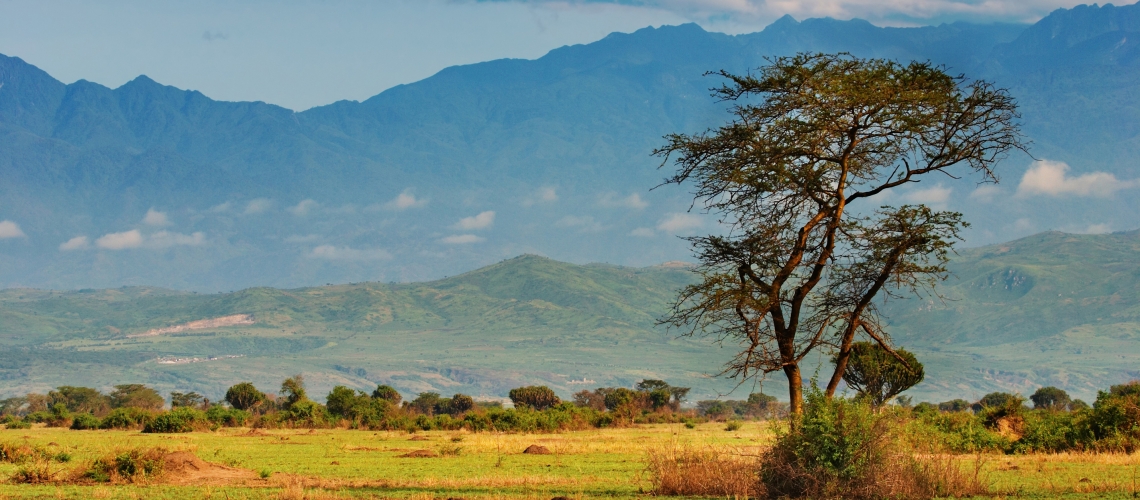
This blog by Karin Erika Kemper was originally published on Voices.
For stories and updates on related activities, follow us on twitter and facebook , or subscribe to our mailing list for regular updates.
Last Updated : 06-16-2024

In Mozambique, Government, Conservationists and Private Sector Come Together to Protect Biodiversity
When it comes to protecting our planet’s biodiversity, we can’t afford to not have a plan – especially where environmental impacts are inevitable.
In conservation, the “last resort” option is an approach known as biodiversity offsets. It involves preserving habitat in one area to compensate for unavoidable environmental damage elsewhere, usually as a result of large projects, such as those involving mining or oil and gas development.
“Offsets are based on the ‘mitigation hierarchy’ approach to environmental damage,” explained World Bank Senior Environmental Specialist Douglas J. Graham. “First try to avoid it, minimize it, or restore any affected areas; if nothing else is feasible, look to biodiversity offsets. Where losses simply cannot be avoided but are deemed acceptable, compensate for the losses by protecting similar habitat somewhere else.”
Graham, along with his colleague George Ledec, World Bank Lead Ecologist, has recently been supporting the Government of Mozambique in thinking through what a “last resort” program would look like given the country’s complex conservation challenges. Mozambique is rich in biodiversity but faces tough development issues, including a poverty rate above 50 percent. Biodiversity offsets present a solution for protecting habitats – including providing badly needed funds for Mozambique’s protected areas, which cover 21 million hectares, or 26 percent of the country’s land area – while tapping into valuable natural resources from the mining and petroleum sectors.
National-level biodiversity offset systems are both complicated and without much precedent: Liberia is another African country where this approach is being tested with support from the World Bank. With funding from PROFOR, Graham and Ledec guided a team in Mozambique to put together a Road Map for Mozambique to show how this could be achieved.
“Mozambique is an incredibly interesting place to be implementing biodiversity offsets,” Graham noted. “First, it has very large mining and oil and gas infrastructure projects. Second, private sector companies are required to protect biodiversity in order to comply with international finance regulations [specifically the International’s Finance Corporation’s 2012 Environmental and Social Performance Standards and the Equator Principles]. And third, the Government is very interested in making this a success. The Ministry of the Environment (MITADER) has even shown their commitment by modifying the decrees regulating environmental impact assessments, requiring that large projects result in no net loss of biodiversity.”
The Road Map notes that, far from being a burden to private companies, this new regulation may actually speed up the approval process for new projects by clarifying procedures, giving companies a way forward to comply with national rules and international standards, for which they are increasingly accountable.
Moreover, Mozambique already has an organization capable of operating the offsets program. The Foundation for the Conservation of Biodiversity (BIOFUND), supported under a separate World Bank project, is primed to make the difficult calculations of how much of one habitat is equal to another; to collect and manage funds from private sector companies, and to protect those “equivalent” habitats in perpetuity. BIOFUND also has the responsibility of classifying habitats based on their level of biodiversity, and mapping critical areas where offsets are not appropriate.
“Some habitats are so rare and so important that they shouldn’t be sacrificed,” Graham said. “For example, this appears to be the case with the Swahili coastal forests in northern Mozambique; that ecoregion could be considered a no-go because of its high global biodiversity value and lack of protection.” Biodiversity offsets are never meant to justify development projects that would seriously damage habitats with unique and irreplaceable biodiversity.
Importantly, the initial steps laid out in the Mozambique Road Map are actively taking place, thanks to a proactive MITADER, significant follow-up funding from the Agence Française de Développement (AFD), and World Bank support to BIOFUND.
“This is a great example of a partnership between the government and a willing private sector,” Ledec said. “Very big international companies are involved with investments worth many millions of dollars. They really want to do this, to show to their boards and to the world that they are meeting their commitments. But they can only do this if the money is well used and handled transparently.”
The Mozambique Road Map was produced as a part of the broader PROFOR-supported work on biodiversity offsets, which includes a Global Biodiversity Offsets User Guide to advise the World Bank and other groups on whether, when, and how to prepare and implement offsets. The Mozambique Road Map is available in English and Portuguese.
(Photo: Victor Brott via Sida Swedish Int. Development Cooperation Agency, Flickr CC)
For stories and updates on related activities, follow us on twitter and facebook , or subscribe to our mailing list for regular updates.
Last Updated : 06-16-2024
Share
Attachments
Strategies for enforcing wildlife trade regulations in Mongolia 2010_0.pdf
Wildlife Trade Survey Final Report Nov08_0.pdf
Keywords
Authors/Partners
Wildlife Conservation Society, World Bank East Asia and Pacific Region, Netherlands-Mongolia Trust Fund for Environmental Reform
Wildlife Trade Law Enforcement in Mongolia
APPROACH
With support primarily from the Netherlands-Mongolian (NEMO) Trust Fund for Environmental Reform and the World Bank’s Forest Law Enforcement and Governance (FLEG) trust fund, the Wildlife Conservation Society (WCS) had been providing technical assistance focused on detecting and taking actions against illegal wildlife trade in Mongolia. The objective of subsequent technical assistance funded by the FLEG Trust Fund (later part of PROFOR) was to assess the gaps in current laws and regulations which hinder or prevent effective wildlife trade law enforcement, and strengthen local capacity to protect species such as the grey wolf, red fox, marmot, brown bear and Eurasian badger.
RESULTS
The project produced a number of results including:
--Reorganization of the Multi-Agency wildlife trade crime unit which conducts joint inspections in Ulaanbaatar markets on wildlife trade and its parts and products.
--Increased public awareness of the risks of illegal wildlife trading. A ‘Special Call’ placed in 6 national newspapers as well as additional TV coverage and debate resonated with the public.
--Increased media awareness. Recommendations to the media concerning advertisements of wildlife parts and products were followed by a large decline in wildlife advertising in Zar Medee and Shuurhai Zar newspapers.
--Facilitated amendments to the Hunting Law.
--Developed extensive Guidelines for Wildlife Law Enforcement.
For stories and updates on related activities, follow us on twitter and facebook , or subscribe to our mailing list for regular updates.
Author : Wildlife Conservation Society, World Bank East Asia and Pacific Region, Netherlands-Mongolia Trust Fund for Environmental Reform
Last Updated : 06-16-2024
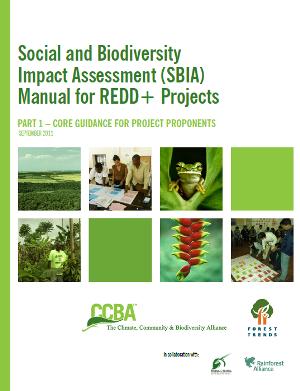
Share
Attachments
Annex 3. CCAH, Peru SIA Case Study 2011_small_0.pdf
Annex 2. GuateCarbon, Guatemala SIA Case Study 2011 Edited_small_0.pdf
Annex 1 Surui Carbon Project SIA Case Study 2011_small_0.pdf
Report on SIA Case Studies for PROFOR_0.pdf
Keywords
Authors/Partners
Authors: Forest Trends'Â Michael Richards and Steve Panfil with key inputs by Nigel Pitman, Steven Price, Natasha Calderwood and Julie Fischer.Partners: Forest Trends and CCBA, with Rainforest Alliance and Fauna & Flora International (FFI).Sponsors: PROFOR, Morgan Stanley, USAID-TransLinks, GEF-UNDP, Rockfeller Foundation and NORAD provided financial support.
Social Impact Assessment of Forest Carbon Projects (toolkit)
CHALLENGE
Are land-based carbon projects good for local people?
Many rural communities are keen to embark on carbon projects as a way of generating income, jobs, and other social benefits. Offset buyers are also attracted to the idea of reducing emissions and simultaneously helping local people. Others are wary that these projects may do more harm than good. However, until recently, there was no clear methodological guidance for carbon project developers to track social and biodiversity impacts. The combination of robust standards for assessing the social performance of projects, and the use of credible methods of social impact assessment could help ensure positive outcomes for local people.
The emphasis in the early years of the carbon markets has been mainly on assuring the integrity of project emission reductions; co-benefits have received much less attention. But the balance is changing, and there are justifiable concerns that co-benefits must, like carbon, be real, ‘additional’ and, as far as possible, measurable. This is partly necessary for market confidence as offset buyers increasingly seek evidence that they are getting what they pay for, including co-benefits. On ethical or equity grounds, carbon projects must at the very least ‘do no harm’ (See related IIED conclusions on REDD+ in the miombo drylands.)
A cost-effective and credible impact assessment toolbox would help carbon project developers meet the verification requirements of the Climate, Community & Biodiversity (CCB) Standards and contribute to building more robust, sustainable projects.
APPROACH
In response to such issues, Forest Trends has formed an alliance with three other NGOs – the Climate, Community and Biodiversity Alliance (CCBA), Rainforest Alliance, and Fauna & Flora International (FFI) – to produce a user-friendly Manual for project proponents on how to conduct cost-effective and credible social impact assessment. Support for this project comes from PROFOR, Morgan Stanley, NORAD, GEF-UNDP, and USAID-Translinks.
The manual is intended for carbon offset project designers and implementers who are not specialists in monitoring and evaluation (M&E).
The Manual was field-tested in 2010 in Brazil, Guatemala and Peru.
RESULTS
Forest Trends released a first version of its manual in June 2010, proceeded to test it in the field (see case studies listed on this page) and solicited feedback. A second version, which integrated biodiversity concerns as well, was released in the fall of 2011 in three parts: a core guidance document and two toolkits (for social and bioversity impact assessments).
Guidance to project developers has been provided by regional training workshops held in Peru (June 2010), Tanzania (October 2010), Kenya (August 2011 with GEF-UNDP funding) and DRC (September 2011 with USAID-Translinks funding). This has resulted in training of approximately 80 terrestrial carbon project developers and other REDD+ stakeholders from about 10 countries. These workshops involved hands-on training using ‘real’ REDD+ projects as case studies over a period of 3-4 days.
In Tanzania, the Tropical Forest Conservation Group (TFCG) REDD project in Lindi District has undertaken a large scale SIA exercise in 2011 following their participation in the SIA Training workshop in Zanzibar in October 2010.
FINDINGS
Experience during field testing and further training in social impact assessment shows that the benefits of using the ‘theory of change’ approach to impact assessment go well beyond the generation of a credible social monitoring plan which can meet the CCB or other multiple benefit standards. These wider benefits include: strategic project design necessary for achieving social and biodiversity objectives (clear objectives are essential for identifying monitoring indicators); participation of project stakeholders; promotion of adaptive project management; and the ease of understanding and explaining the results to a range of stakeholders.
Keys to better participation of local stakeholders include the quality of the ‘focal issue working group’ facilitators (so the latter need to be more carefully selected and trained); some prior training or exposure for community participants; the use of a ‘practice activity’ to develop good practice consultation skills; and various issues around the more effective participation of local stakeholders, especially women.
Based partly on the costs in the three case studies, the authors estimate that the cost of generating a credible social monitoring plan using their approach will be in the range $25,000-35,000 depending on various factors.
For stories and updates on related activities, follow us on twitter and facebook , or subscribe to our mailing list for regular updates.
Author : Authors: Forest Trends'Â Michael Richards and Steve Panfil with key inputs by Nigel Pitman, Steven Price, Natasha Calderwood and Julie Fischer.Partners: Forest Trends and CCBA, with Rainforest Alliance and Fauna & Flora International (FFI).Sponsors: PROFOR, Morgan Stanley, USAID-TransLinks, GEF-UNDP, Rockfeller Foundation and NORAD provided financial support.
Last Updated : 06-16-2024

Road to Kunming: Economics and Finance for Biodiversity
PROGRAM SUMMARY
The development objective of this activity is to raise awareness among staff in ministries of finance and other sector ministries of WB client countries and among international financial sector stakeholders of the importance and opportunity of investing in biodiversity and ecosystem services sustainable management.
CHALLENGE
APPROACH
RESULTS
Event on “Invest in Nature” at IMF-WBG Annual Meetings 2019. The event was attended in person by ~200 people in the room, including ministers, international organizations and Bank leadership, and online by 575 people (of which 41.3 percent women). Most people who engaged online were 25-34 years old. Almost 18,000 people visited the event page. The event was the fourth most livestreamed event at the 2019 Annual Meetings (out of 19 livestreamed events). The event hashtag #InvestInNature reached more than 5 million Twitter users, generating 23.5 million impressions worldwide, and trending in DC area during the live event. On live engagement/comments, the event was rated 2nd out of 19 live-streamed events. Online, the event attracted strong engagement from key influencers, including Alok Sharna, UK, Zac Goldsmith, UK, Inger Andersen, UN Environment, IPBES, CBD.
China-WB workshop on “Maximizing private finance for biodiversity and ecosystem services”. Over the course of the two days, the workshop was attended by 67 (of which 26 women) representatives of the Chinese Government, notably from the Ministry of Finance and the MEE, and several other CBD Parties and the Secretariat, the European Commission, the financial sector, multilateral and bilateral development agencies, NGOs and academic experts. The workshop was attended at high level with two Director Generals (from Ministry of Finance and Ministry of Ecology and Environment). On the World Bank side, the event was attended by the ENB Global Director and by the EAP Regional Director.
It had been envisaged that the activities would contribute to inform the preparation of the post-2020 global biodiversity framework and in particular the policy mainstreaming and the resource mobilization dimensions of the framework. Through the dialogue in these activities the team was able to inform the preparation of the zero draft of the post-2020 global biodiversity framework. The participation of the UK at the Annual Meetings event was instrumental in engaging with that country on follow up action such as a possible collaboration with DEFRA on ecosystem policy modelling. On the finance side, the activity allowed to inform the work of the expert panel on resource mobilization for the post-2020 framework.
For stories and updates on related activities, follow us on twitter and facebook , or subscribe to our mailing list for regular updates.
Last Updated : 06-16-2024
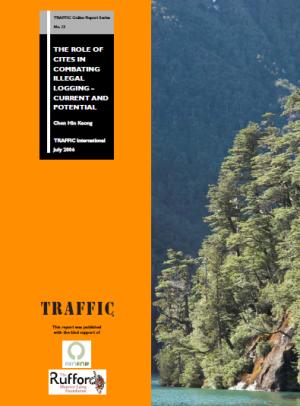
Share
Attachments
Keywords
Authors/Partners
Chen Hin Keong, TRAFFIC
The Role of CITES in Controlling Illegal Logging
The Convention on International Trade in Endangered Species of Wild Fauna and Flora (CITES) has some limited ability to assist range states (countries where species occur) to tackle illegal trade.
The Role of CITES in Combating Illegal Logging, published in 2006, reviews the relevant provisions of the Convention and examines experiences of how CITES has been used to address the problem of illegal logging for several CITES-listed tree species. The study authored by TRAFFIC, a joint program run by WWF and IUCN, benefited from PROFOR and World Bank financial support.
It provides examples of species from each of the Convention's three appendices:
- Alerce Fitzroya cupressoides (Appendix I—species imminently threatened with biological extinction),
- Agarwood Aquilaria malaccensis (Appendix II—species not currently threatened but may become so if trade is not regulated),
- Big-leaf Mahogany Swietenia macrophylla (listed in Appendix III from November 1995; included in Appendix II effective 15 November 2003), and Ramin Gonystylus spp. (Appendix III—species listed by an individual State in an effort to enlist international cooperation to control trade from their country).
For stories and updates on related activities, follow us on twitter and facebook , or subscribe to our mailing list for regular updates.
Author : Chen Hin Keong, TRAFFIC
Last Updated : 06-16-2024
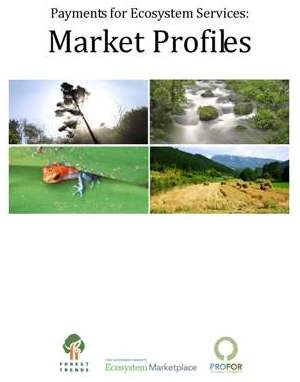
Share
Related Links
Report: Payments for Environmental Services: Market Profiles
Keywords
Authors/Partners
Ecosystem Marketplace, Forest Trends, PROFOR
The Matrix: Mapping Payments for Ecosystem Services
What is the composition and size of the global market for payments for ecosystem services (PES)?
In an effort to answer this question, PROFOR supported an endeavor to devise a matrix which maps the size, environmental and community impacts, participants and shapers, and market trends for PES in the forestry and other sectors.
MAIN FINDINGS
The findings are broad in scope and complex. A few examples of trends uncovered during this process are:
- While most PES markets are growing at approximately 10 to 20 percent a year, the carbon markets are skyrocketing at 200 to 700 percent a year. The Voluntary Carbon market, where the lion’s share of the land use and land use change and forestry project take place, is growing at a faster rate than the regulated carbon market.
- The participants and experts surveyed believe existing markets have the potential to address in a significant way the global environmental issues of biodiversity loss, water pollution and climate change – but may not be living up to their potential. One major stumbling block continues to be transparent information and capacity.
- To achieve the sustainable management of ecosystem services, PES schemes must be designed and implemented carefully, intelligently, and adaptively.
- An important aspect across all of these markets will be to ensure that the communities and small scale producers are able to actively participate and benefit from ecosystem service markets. This will mean developing instruments to provide support, such as aggregation services to communities, shaping regulation to engage local small-scale providers, and clarifying tenure and user rights associated with these new opportunities.
For stories and updates on related activities, follow us on twitter and facebook , or subscribe to our mailing list for regular updates.
Author : Ecosystem Marketplace, Forest Trends, PROFOR
Last Updated : 06-16-2024
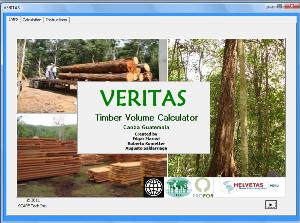
Share
Related Links
Keywords
Authors/Partners
Intercooperation Andean Office, CONAP, INAB, Veduria Forestal Communitaria
National Timber Yield Tables for Mahogany
Technical Assistance for the Development of the National Timber Yield Tables for Mahogany (Swietenia macrophylla) Standing Volume & Export Grade Sawn wood
CHALLENGE
Mahogany (Swietenia macrophylla) is the single most valuable tropical timber species in international trade. It is also one of the most important tropical species subject to selective harvesting.
Over-harvesting and illegal logging of this species led to its listing in Appendix II of the CITES Convention. Market studies show that the largest proportion of mahogany is exported to the United States, France, Canada, England, Dominican Republic and other European countries. Despite conservation, supervision and control efforts the impact of mahogany overharvesting and illegal logging has contributed to the species' rapid commercial extinction in many areas of its natural distribution.
The use of inaccurate conversion factors for calculating export grade sawn wood yields from standing timber estimates is frequently used to “launder” illegally harvested mahogany. The resulting projection of export grade sawn wood overstates the volumes actually produced from legally harvested trees of both species. These inflated figures help to justify additional CITES export permits which are used to facilitate the export of timber of illegal origin.
The same fate also applies to Spanish cedar (Cedrela Odorata) also included in CITES Appendix III. In some countries, Spanish cedar trade has skyrocketed in the last three years. If harvesting trends and the extent of illegal logging continue at the same pace, Spanish Cedar will follow mahogany's detrimental patterns.
APPROACH
Accurate conversion factors for standing timber and export grade sawn wood are crucial for the effective implementation of the CITES convention.
Guatemala’s CONAP and INAB, government agencies for protected areas and forest administration respectively; and Peru’s OSINFOR, forest control and supervision government agency, have requested technical assistance from Intercooperation and PROFOR's FLEG team at the World Bank to develop their national yield tables.
Technical assistance activities related to the development of national tables are expected to take place in Guatemala City and in selected forest concessions of Peten, Guatemala targeting relevant staff from CONAP, INAB and forest concessionaires. Desktop work will allow field data input, calibration of the model, definition of product classifications and development of the timber yield tables and statistical calculation.
In Peru, support and technical assistance to the Veduria Forestal Comunitaria activities will relate to monitoring, over sightings and obtaining lessons learned from at least two cases within forest industry-indigenous community timber commercial contracts, to prevent illegal logging and unsound social practices impacting local communities of Pucallpa, Atalaya and Contamana.
This activity has supported the following progress in Guatemala:
- Field work (identification, selection and data collection) in five (5) mahogany production units: La Union, Chosquitan, Rio Chanchin, Carmelita and Afisap totaling about 18,000 hectares in El Peten, Guatemala.
- Field work was followed by extensive data processing, regression analysis and development of volumetric conversion factors. Based on this analysis, total average volume of export grade sawn wood including branches for mahogany in Guatemala is approximately 3.328 m3 per tree.
- CONAP (Guatemala's CITES authority) has fully incorporated the newly developed national yield table in its country report.
- Development of a simple data processing software known as the VERITAS Timber Volume Calculator which can determine in real time the expected sawn wood volume of a given tree in all export timber grades -- with potential application for other timber species.
In Peru, assistance for Verduria Forestal Communitaria Activities resulted in monitoring of logging contracts and technical assistance to 33 indigenous communities in Contamana and Atalaya provinces. The team reviewed and provided training on issues such as forest management plans, permits, contracts, operations, volume calculation, payments, etc and also assisted communities facing forest land tenure problems (resulting from logging forest concessions overlapping with community land).
Monitoring the implementation of 11 logging contracts revealed a consistent pattern of inequality and lack of transparency in contract terms and conditions that had significant impacts on community livelihoods and the environmental conditions of their natural resources. For example:
- Logging industry focus was on selective and overexploitation of only two or three species of high commercial value
- In several cases, logging took place without permits
- Jobs were mostly given to outsiders
- Benefits to the communities were accrued in actual timber (20 to 30% of extracted volume), often resold to the logging industry at discounted prices
- Logging industry used permits, obtained on behalf of the indigenous communities, to launder illegally harvested timber, making communities liable for those illegal activities
Material collected from these experiences will serve as baseline information for the development of guiding principles and criteria for monitoring logging contracts in Peru and beyond.
Additional results and products will be shared on this page when they become available. You can also follow us on twitter (twitter.com/forestideas) or subscribe to our mailing list for regular updates.
For stories and updates on related activities, follow us on twitter and facebook , or subscribe to our mailing list for regular updates.
Author : Intercooperation Andean Office, CONAP, INAB, Veduria Forestal Communitaria
Last Updated : 06-16-2024
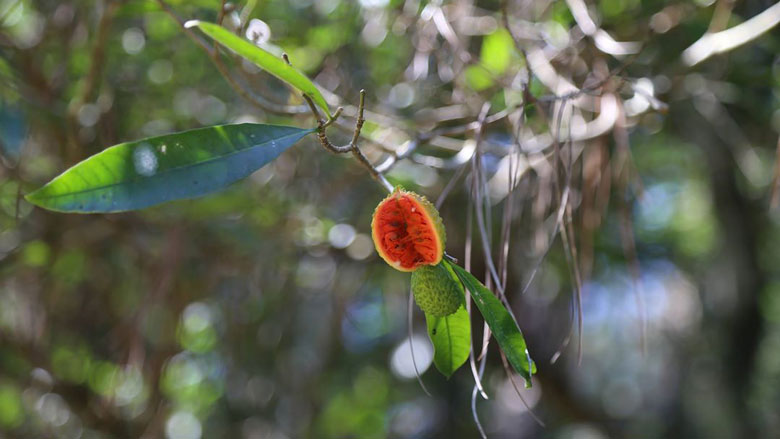
Paraguay conservation of the atlantic forest corridors and landscapes for biodiversity and local livelihoods
CHALLENGE
The Atlantic Forests in Eastern Paraguay have been largely destroyed, with only 15% remaining in protected areas, farmland, indigenous communities’ communal land and private reserves. This remaining forest is under increasing pressure from a variety of forces, including the expansion of intensive agriculture (soy plantations), use of forest biomass as a cheap energy source (by the agroindustry and rural communities) and subsistence agriculture. The current forces affecting the Paraguayan’s landscapes are likely to increase the rate of deforestation and forest degradation in the country, affecting biodiversity, food and energy sources, and likelihoods of local communities and indigenous peoples.
APPROACH
This project will allow to follow-up on the results and lessons learned from the GEF Project Conservation of Biodiversity and Sustainable Land Management in the Atlantic Forest of Eastern Paraguay (P0944335), which has successfully implemented a large number of restoration and reforestation projects with small farmers and indigenous communities from about 200 communities and 55 municipalities in the Atlantic Forest Corridor. This activity will also maintain the on-going policy dialogue on forest restoration and governance with the Government of Paraguay, ITAIPU, the National Forestry Institute (INFONA) and National Indigenous People Institute (INDI).
The main elements of this activity are as follows:
1. Paraguay Atlantic Forest Corridor Threat Assessment. Analyses and evaluation of current and projected trends causing the deforestation in two biodiversity rich areas of the Atlantic Forest Biodiversity Corridor. Such analysis will build on the latest technical studies and those prepared under the Paraguay Biodiversity Project, and information in land use change in forest target areas for biodiversity conservation and livelihoods of local communities (indigenous and rural farmers); analysis of the benefits of forest services and forest restoration to reduce poverty and conserve biodiversity, current forest governance issues and application of forest regulations in the area.
2. Corridor Dialogues. With the results of the in-depth assessment, this activity will provide support to the Ministry of Environment, INFONA (Forestry National Agency) and ITAIPU to engage in a series of Corridor Dialogues with key indigenous communities’ leaders, forest sector authorities, policymakers and stakeholders across sectors, with the aim of reaching consensus on possible mechanisms to improve forest governance, increase conservation and sustain livelihoods of poor indigenous communities in two key biodiversity areas.
3. Plan for Conservation and Restoration of Two High Biodiversity Areas of the Atlantic Forest Corridor. This will include the development of the roadmap for improving coordination among the different institutions and stakeholders of the Corridor; a report on the possible options and mechanisms to promote restoration with native species of high biodiversity and economic values in target areas of the Atlantic Forest Corridor and for improving local likelihoods of rural and indigenous peoples; and identification of potential instruments for sustainable landscape restoration with the participation of the private sector (agribusiness). In addition, an investment plan will be developed for reforestation of high biodiversity value areas in the Corridor and to support landscape restoration projects that can support income to local communities and their likelihoods.
4. Workshops with the participation of indigenous communities, farmers, representatives of the environment and forest sectors, NGOs, national cross-sector policymakers, and others. To date, this activity has carried out three workshops on governance, one dialogue, and five meetings with local stakeholders. More than 100 people have been consulted, of which about one third are women.
RESULTS
This activity is ongoing. Preliminary findings of this activity show that San Rafael, despite the increasing threats and risks over forest land, is still home of biodiversity. The park is home to 427 bird species, which about half of the number for the whole country. The main risks affecting forest conservation in San Rafael are linked to illegal cutting of precious woods (guatambú, lapacho, cedro y laurel) by farmers, external buyer, indigenous communities. There is an urgent need to improve governance and presence of government officials as currently, legislation enforcement is limited. The use of Environmental Management Plans as part of EIA licenses are some of the instruments used to cut the forest in San Rafael.
Implementation has been adjusted due to adverse weather as well political events in Paraguay. However, it is likely that this project had a positive influence on the government’s decision to create new legal categories for conservation areas, namely Biological Corridors and Indigenous Peoples’ Reserves.
For stories and updates on related activities, follow us on twitter and facebook , or subscribe to our mailing list for regular updates.
Last Updated : 06-16-2024








